I’ve been tracking construction safety investments for years, and most executives get the math wrong.
They think safety costs money. The reality? Companies save $4-$6 for every dollar they put into workplace safety. That’s not corporate responsibility—that’s profit strategy.
So when I heard Algeco UK was hosting an industry-wide Safety Summit in Coventry on September 11, I had to dig deeper. What were they really after?
The Real Target
The guest list told the story. Contractors, customers, and industry heavyweights including Costain, Brookdale Transport, Scottish Power, and ALLMI. These aren’t companies that gather for feel-good safety theater.
They had four specific targets: High voltage powerlines. Unsecured items in transit. Lift plan controls and load security. Compliance and assurance.
But here’s what caught my attention—they weren’t talking about accidents. They were hunting near misses.
That’s where the money lives.
The Near Miss Gold Mine
Mike Shakeshaft, Algeco UK’s HSE Director, explained their approach. Instead of treating near miss incidents as failures, they mine them for intelligence. Each incident becomes data for preventing the expensive stuff—serious injuries, work stoppages, insurance claims.
I’ve seen this shift from reactive to proactive safety management transform bottom lines. The numbers back it up: 74% of companies see increased worker engagement when Health & Safety plans start before construction begins.
More engagement equals fewer accidents. Fewer accidents equal better margins.
Simple math that most companies miss.
Beyond the Minimum
Here’s where Algeco UK gets interesting. They don’t just meet safety requirements—they exceed them by design.
Mobile phone calls banned while driving, even hands-free. Ten life-saving rules that go beyond regulation. A “stop the job” policy that empowers any worker to halt operations.
These aren’t checkbox exercises. With 60,000 annual jobs and 60% delivered through third-party suppliers, Algeco UK needed a system that works across organizational boundaries.
Why? Because over 60% of construction accidents happen within an employee’s first year. New workers cost the most to train and lose the most when injured.
The financial logic is brutal and clear.
The Collaboration Advantage
Most safety programs operate in competitive silos. Companies protect their workers but hoard their insights. Algeco UK flipped this model.
By bringing competitors into the same room, they created something rare—shared intelligence that benefits everyone. When safety knowledge crosses company lines, it creates industry standards that individual companies struggle to build alone.
I’ve watched this pattern in other industries. The companies that lead collaborative safety initiatives don’t just reduce their own costs—they force competitors to match their standards or lose contracts.
That’s strategic advantage disguised as social responsibility.
The Profit Calculation
Algeco UK’s approach positions them ahead of regulatory curves and competitor practices. Other companies will need to match these standards to remain viable on major projects.
Zero harm culture isn’t idealistic—it’s economic. Collaboration and prevention deliver measurable returns that traditional safety approaches can’t match.
The companies that figure this out first capture the advantage. The ones that don’t pay the premium later.
Turn near misses into intelligence. Turn safety standards into competitive moats. Turn collaboration into market position.
That’s how you turn safety into profit gold.
